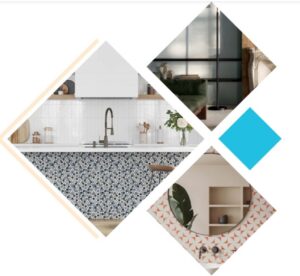The indoor and outdoor spaces have distinct features; however, many people are blending both spaces to create a home full of light and energy that is expansive and inspiring with an alluring effect.
Table of Contents
The indoor and outdoor spaces have distinct features; however, many people are blending both spaces to create a home full of light and energy that is expansive and inspiring with an alluring effect.
Homes connecting the indoor and outdoor spaces create a beautiful spacious environment that makes entertaining families and friends easy. The rooms are full of light and energy, and guests easily transition from the indoors to the outdoors and vice versa.
Many houses with indoor patios in Texas connect the outdoors with oversized glass doors to remove the traditional barrier between indoor and outdoor spaces. Blending indoor-outdoor in Texas is becoming an acceptable trend as there are more pros to combining the two spaces.
Many design indoor and outdoor patio flooring to combine and create a cozy feeling when moving from indoor to outdoor and have the breezy outdoor feeling extend when stepping inside.
The indoor spaces are designed with nature’s inspired patterns, while the outdoor space adopts the warm indoor atmosphere. For a smooth transition between spaces that make the design work, the interior and outdoor areas should have a specific pattern, design, or element.
The following are differences in designs of an indoor and outdoor patio
Sunlight
The key fundamental difference between the indoor and outdoor patio design is that the indoor patio is an extension of the indoor space. In contrast, the outdoor patio is outside but connected to the building. This is visible in the design of both patios relating to sunlight.
Sunlight is an important part of why people have extended outdoor space; however, in an indoor patio design, the sunlight is well-regulated. Unlike in an outdoor patio, large windows are needed in a sunroom. Sunrooms is a common type of indoor patio where the rooms give a feeling of being outside.
Furniture
Another key difference in the design features of both outdoor and indoor patios is the type of furniture used. A piece of outdoor furniture can be used indoors and outdoors; they are durable and can withstand the elements.
A piece of sturdy indoor furniture is not as strong as outdoor furniture. They are very strong; however, they will not last long when placed outside and have continuous contact with rain and sunlight; when designing an indoor and outdoor patio, the type of furniture to be used is very important.
Building materials
When it comes to patio design and building, materials used in building matter. Indoor patio materials can be from the same materials used in building the home since they are more like an extension of the house.
Unlike an outdoor patio, the type of materials to be used must be well-planned and should include materials that can withstand elements for a long time. Materials like concrete, iron, and wood are quite common when building outdoor patio
Style
The styles in the indoor patio easily complement the house as it is easily seen as an extension. This is essential in patio design. The patio style should add to the beauty of the house—an indoor patio like a solarium that uses large windows or glass, which are very high and vaulted.
The style of the outdoor patio matters, and more effort must be put into the design of a patio that complements the main building. The location for building the patio, the floor plans, and what the patio will be used for are all very important and must complement the house. A good patio with the right style looks like a landscape magazine building.
Walls and glasses
The walls are the most visible design difference between an indoor and outdoor patio. An indoor patio is an extension of rooms in the house and is within the house, unlike an outdoor patio. The walls and glasses in the indoor patio keep bugs and insects out and are generally safer when compared to an outdoor space.
Walls also enable privacy, as outsiders cannot see the patio inside. People who want an outdoor vibe but want to relax within their homes will be better off with an indoor patio design. The tapestries and design on the wall can also help beautify the home and increase its value.
Conclusion
Outdoor and indoor patio design have their pros and cons, and preference is based on homeowners





More Stories
How Can You Find the Best Life and Auto Insurance in New Jersey?
A Guide to Finding the Best Moving Company in Newport Beach CA
Kitchen Backsplash Tile vs. Murals: The Ultimate Comparison Guide